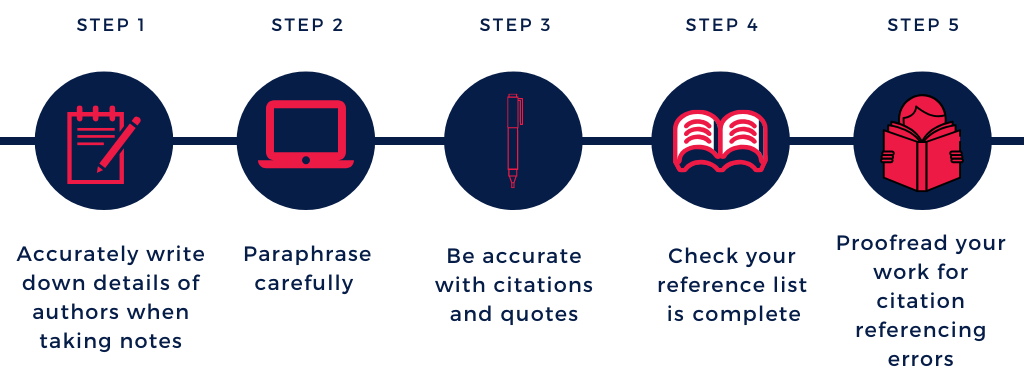Plagiarism
Plagiarism
You wouldn’t want someone else taking credit for your hard work—which is why it’s important to always give credit when using someone else’s ideas. Not only is it the right thing to do, but it also shows that you have integrity and respect the work of others.
What is plagiarism?
Plagiarism is the use of someone else’s work or ideas without giving them proper credit. It is considered a form of theft, because the work of others belongs to them, and also fraud, because it means you are claiming someone else’s work or ideas as your own.
Any time you use the ideas of others in your own work, you must ensure you are referencing them properly.
Types of plagiarism
| Intentional plagiarism | |
 |
Intentional plagiarism is deliberately using someone else’s ideas, words or images and presenting them as your own. This includes using paraphrasing or translation software to change materials without acknowledging the sources. Intentional plagiarism is theft and fraud, and has serious consequences. |
| Accidental plagiarism | |
 |
Accidental plagiarism is when you do not reference sources correctly in an assignment. This usually happens when students haven't carefully noted their sources as they work. Even if you are not quoting someone directly, you must include a citation. While accidental plagiarism might not be intended, it can still carry negative academic consequences. |
| Self plagiarism | |
 |
Using parts of your old assignments in new assignments without referencing is self-plagiarism. Many courses do not allow self-referencing, but if you are permitted to use parts of your old assignments, make sure you reference them the same way you would reference any other source. |
Avoiding plagiarism
Follow the steps below to help avoid accidental plagiarism:

- Accurately write down details of authors when taking notes.
- Paraphrase carefully.
- Be accurate with citations and quotes.
- Check your reference list is complete.
- Proofread your work for citation referencing errors.
